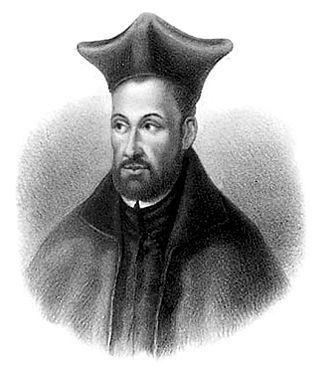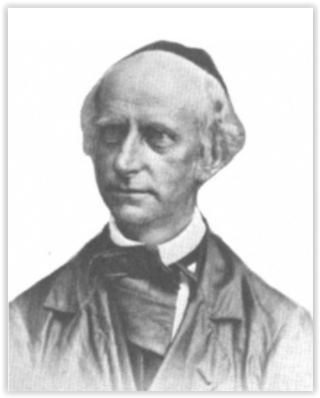Related Research Articles

Manco Cápac,also known as Manco Inca and Ayar Manco,was,according to some historians,the first governor and founder of the Inca civilization in Cusco,possibly in the early 13th century. He is also a main figure of Inca mythology,being the protagonist of the two best known legends about the origin of the Inca,both of them connecting him to the foundation of Cusco. His main wife was his older sister,Mama Uqllu,also the mother of his son and successor Sinchi Ruq'a. Even though his figure is mentioned in several chronicles,his actual existence remains uncertain.

De Smet is a city in and the county seat of Kingsbury County,South Dakota,United States. The population was 1,056 at the 2020 census.

Peter Faber,SJ was a Savoyard Catholic priest,theologian and co-founder of the Society of Jesus,along with Ignatius of Loyola and Francis Xavier. Pope Francis announced his canonization in 2013.

The Coeur d'Alene Tribe are a Native American tribe and one of five federally recognized tribes in the state of Idaho. The Coeur d'Alene have sovereign control of their Coeur d'Alene Reservation,which includes a significant portion of Lake Coeur d'Alene and its submerged lands.

The Confederated Salish and Kootenai Tribes of the Flathead Reservation are a federally recognized tribe in the U.S. state of Montana. The government includes members of several Bitterroot Salish,Kootenai and Pend d'Oreilles tribes and is centered on the Flathead Indian Reservation.

The Bitterroot Salish are a Salish-speaking group of Native Americans,and one of three tribes of the Confederated Salish and Kootenai Tribes of the Flathead Nation in Montana. The Flathead Reservation is home to the Kootenai and Pend d'Oreilles tribes also. Bitterroot Salish or Flathead originally lived in an area west of Billings,Montana extending to the continental divide in the west and south of Great Falls,Montana extending to the Montana–Wyoming border. From there they later moved west into the Bitterroot Valley. By request,a Catholic mission was built here in 1841. In 1891 they were forcibly moved to the Flathead Reservation.
Billy Caldwell,known also as Sauganash,a variant spelling of Zhagnash meaning British in the Potawatomi language,was a Métis fur trader who was commissioned captain in the Indian Department of Canada during the War of 1812,and fought alongside Tecumseh at the Battle of Frenchtown and likely all the subsequent battles until their defeat at the Battle of the Thames. In 1829 and 1833,he negotiated treaties on behalf of the United Nations of Chippewa,Ottawa and Potawatomi with the United States,as a leader of a Potawatomi and led his band to Trader's Point,Iowa Territory,modern day Council Bluffs. He had worked to gain the boundary long promised by the British between white settlers and Indians,but never achieved it and instead acquiesced to American purchase and Indian removal,leading his followers personally across the Mississippi,as evidenced by his signing of the 2nd Treaty of Prairie du Chien and his inclusion on the Removal Muster Rolls of 1837.

Charles Phillip Ingalls was an American pioneer,farmer,government official,musician,and carpenter who was the father of Laura Ingalls Wilder,known for her Little House series of books. He is depicted as the character "Pa" in the books and the television series.

Fort Union Trading Post National Historic Site is a partial reconstruction of the most important fur trading post on the upper Missouri River from 1829 to 1867. The fort site is about two miles from the confluence of the Missouri River and its tributary,the Yellowstone River,on the Dakota side of the North Dakota/Montana border,25 miles from Williston,North Dakota.
Antonio Ravalli,also known as Anthony Ravalli,was an Italian Jesuit missionary,artist,and doctor active in the Pacific Northwest region of the United States. He is known primarily for his contributions to the architecture and art of Jesuit missions in the region. He also inoculated the tribes he served against smallpox,and his efforts shielded the Bitterroot Salish against epidemics that devastated other tribes. In 1893 Ravalli County,Montana was named after him.
The culture of the U.S. state of South Dakota exhibits influences from many different sources. American Indians,the cultures of the American West and Midwest,and the customs and traditions of many of the state's various immigrant groups have all contributed to South Dakota art,music,and literature.

Ignatius of Loyola,venerated as Saint Ignatius of Loyola,was a Basque Spaniard Catholic priest and theologian,who,with six companions,founded the religious order of the Society of Jesus (Jesuits),and became its first Superior General,in Paris in 1541.

Richard De Smet was a Belgian Jesuit priest,and missionary in India. As Indologist he became a renowned Sankara specialist.

The Historic St. Mary's Mission is a mission established by the Society of Jesus of the Catholic Church,located now on Fourth Street in modern-day Stevensville,Montana. Founded in 1841 and designed as an ongoing village for Catholic Salish Indians,St. Mary's was the first permanent settlement made by non-indigenous peoples in what became the state of Montana. The mission structure was rebuilt in 1866. It was listed on the National Register of Historic Places in 1970.

Pierre-Jean De Smet,SJ,also known as Pieter-Jan De Smet,was a Flemish Catholic priest and member of the Society of Jesus (Jesuits). He is known primarily for his widespread missionary work in the mid-19th century among the Native American peoples,in the midwestern and northwestern United States and western Canada.
Christiaan Jacob Adriaan Hoeken,SJ (1808–1851) was a Jesuit missionary of Dutch origin who worked in the United States among the first nations. He wrote several books in Potawatomi and founded St. Ignatius Mission among the Kalispel. Hoecken died of malaria sailing up the Missouri River.

Fort Owen State Park is a historic preservation area owned by the state of Montana in the United States,located on the northern outskirts of the town of Stevensville,Montana. The park is named for Fort Owen,a mission and later trading post established in 1841 and named for trader John Owen. The park is one acre (0.40 ha) in size,3,293 feet (1,004 m) in elevation,and is owned and managed by the Montana Department of Fish,Wildlife and Parks. Fort Owen is known as the "cradle of Montana civilization".

Eagle Woman That All Look At was a Lakota activist,diplomat,trader,and translator,who was known for her efforts mediating the conflicts between white settlers,the United States government,and the Sioux. She is credited with being the only woman recognized as a chief among the Sioux.

Adrianus Hoecken,SJ was a Jesuit missionary of Dutch origin who worked among different Native American tribes in the United States. He was a younger brother of fellow Jesuit Christian Hoecken and one of the first travel companions of fellow Jesuit Pierre-Jean De Smet.
Nicholas Point;,was a French Catholic priest,artist,and member of the Society of Jesus (Jesuits). He is known primarily for the drawings and watercolors he created during his missionary work in the mid-19th century among the Native American peoples in the northwestern United States.
References
- ↑ "Adrian Hoecken to de Smet, Flat-Head Camp, in the Black-Feet Country, Oct. 18, 1855". Columbia Communities: Sand Point. Retrieved 2013-02-26.
- This article incorporates text from the public domain work, Frederick Webb Hodge (1912). Handbook of American Indians North of Mexico. U.S. Government Printing Office. p. 445 . Retrieved 25 February 2013..